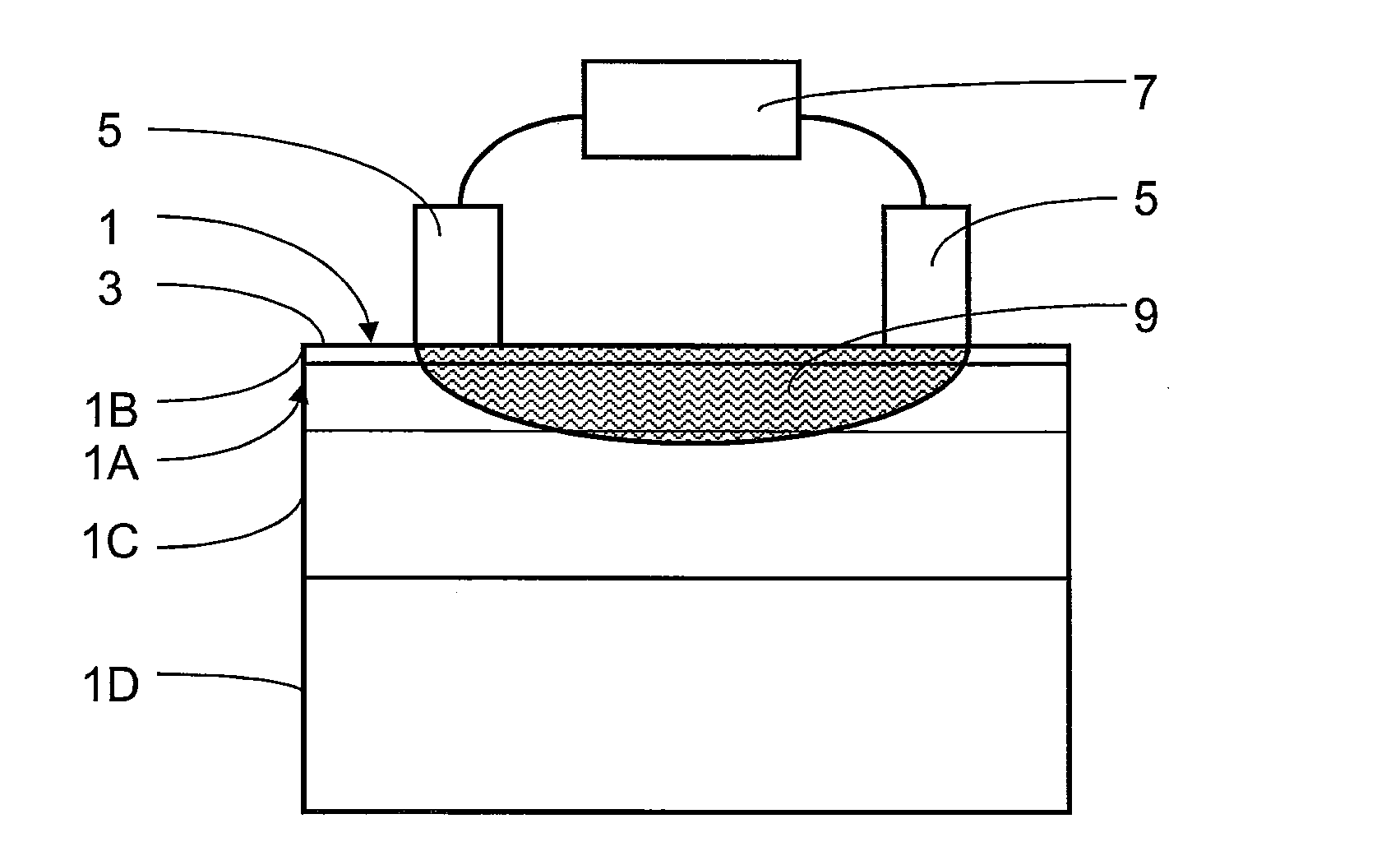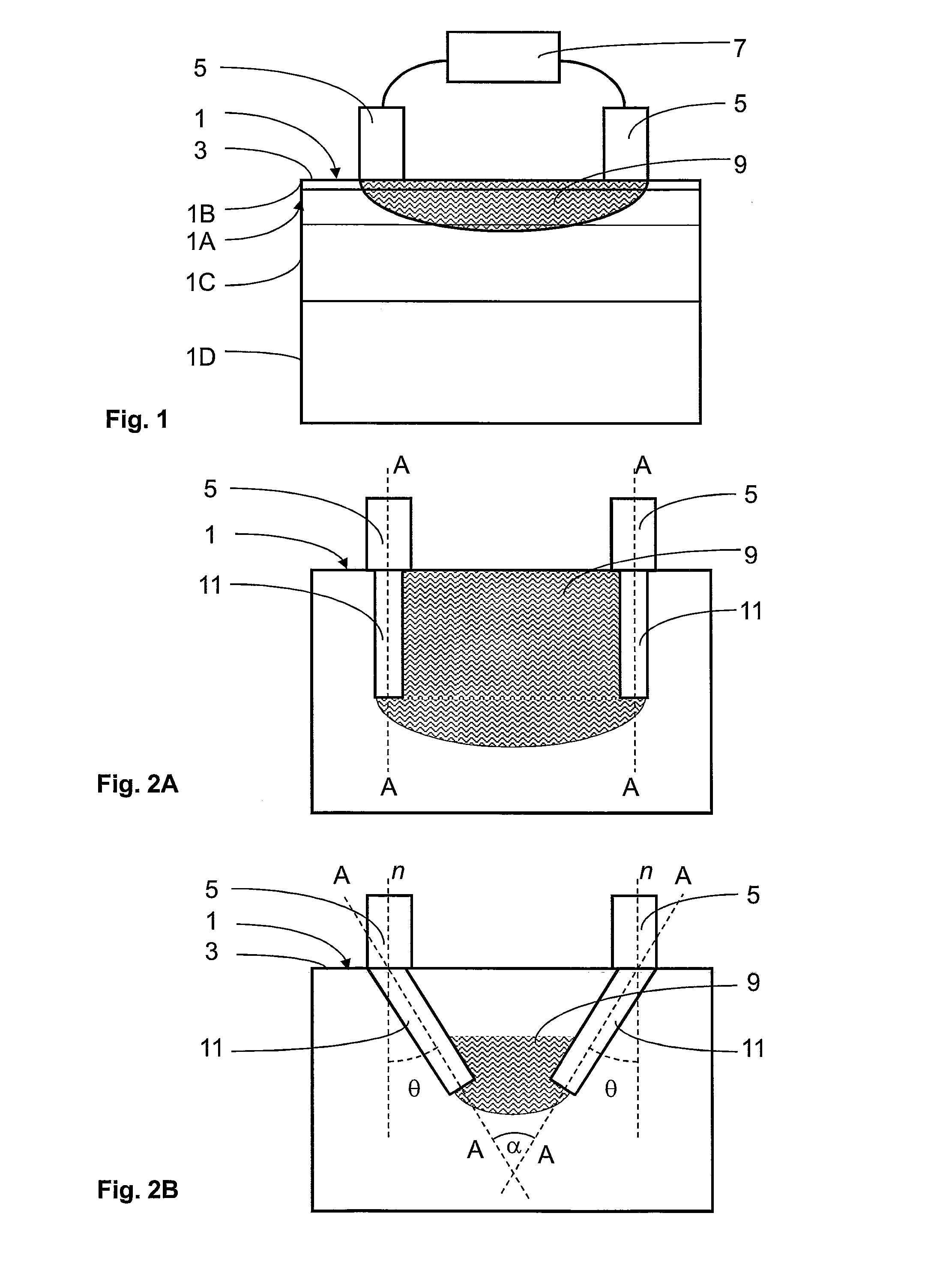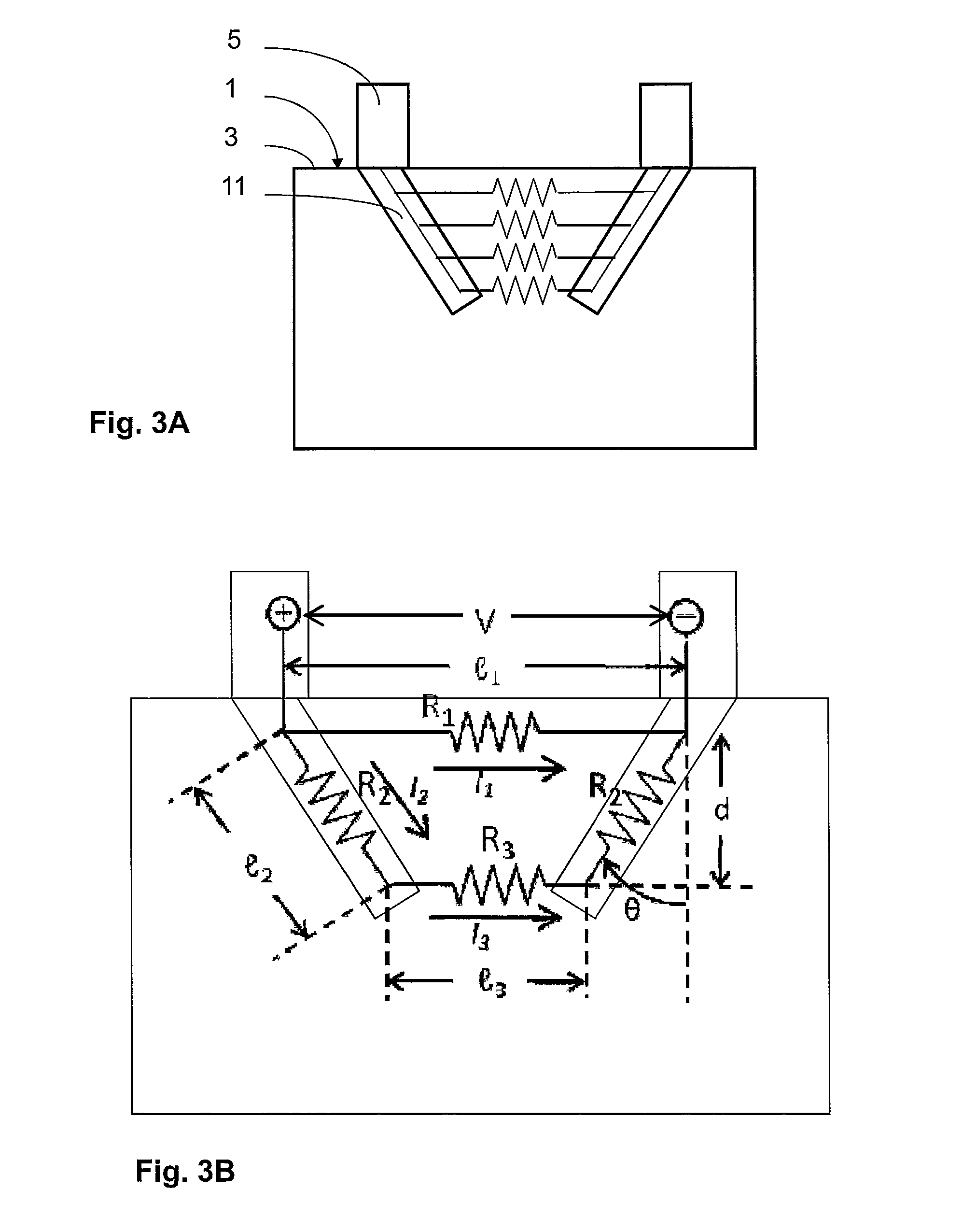Method and system for skin treatment
a skin treatment and skin technology, applied in the field of mammalian tissue treatment, can solve the problems of serious safety concerns, hot spots inside tissues, undesirable and unsafe biological tissues, etc., and achieve the effect of reducing physical path length, improving rf energy coupling, and reducing the length of physical path length
- Summary
- Abstract
- Description
- Claims
- Application Information
AI Technical Summary
Benefits of technology
Problems solved by technology
Method used
Image
Examples
Embodiment Construction
[0032]It is noted that in the drawings, like features may be identified with like reference signs. It is further noted that the drawings are schematic, not necessarily to scale and that details that are not required for understanding the present invention may have been omitted. The terms “upward”, “downward”, “below”, “above”, and the like relate to the embodiments as oriented in the drawings. Further, elements that are at least substantially identical or that perform an at least substantially identical function are denoted by the same numeral.
[0033]FIG. 1 schematically indicates RF treatment of skin tissue 1 having a skin surface 3 and tissue layers epidermis 1A (including the stratum corneum 1B), dermis 1C and subcutis 1D. The treatment uses a treatment system comprising RF electrodes 5 connected to an RF source 7. The electrodes 5 are placed in contact with the skin surface 3 at some distance from each other. By applying an RF signal to the electrodes 5, an RF current will flow t...
PUM
 Login to View More
Login to View More Abstract
Description
Claims
Application Information
 Login to View More
Login to View More - R&D
- Intellectual Property
- Life Sciences
- Materials
- Tech Scout
- Unparalleled Data Quality
- Higher Quality Content
- 60% Fewer Hallucinations
Browse by: Latest US Patents, China's latest patents, Technical Efficacy Thesaurus, Application Domain, Technology Topic, Popular Technical Reports.
© 2025 PatSnap. All rights reserved.Legal|Privacy policy|Modern Slavery Act Transparency Statement|Sitemap|About US| Contact US: help@patsnap.com



